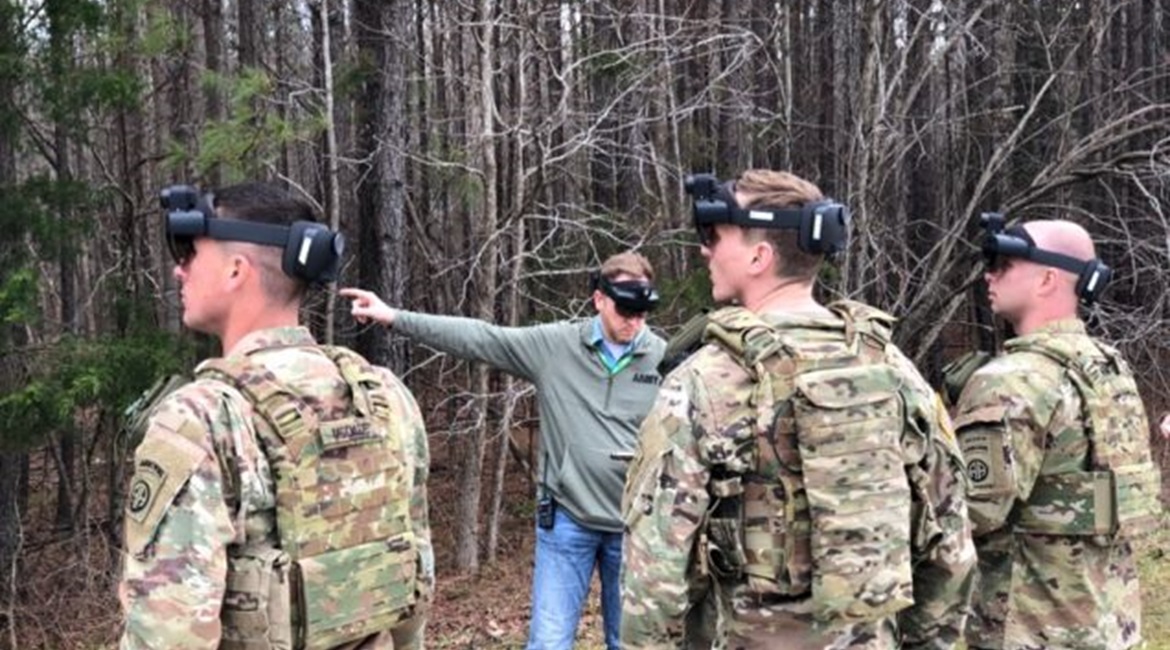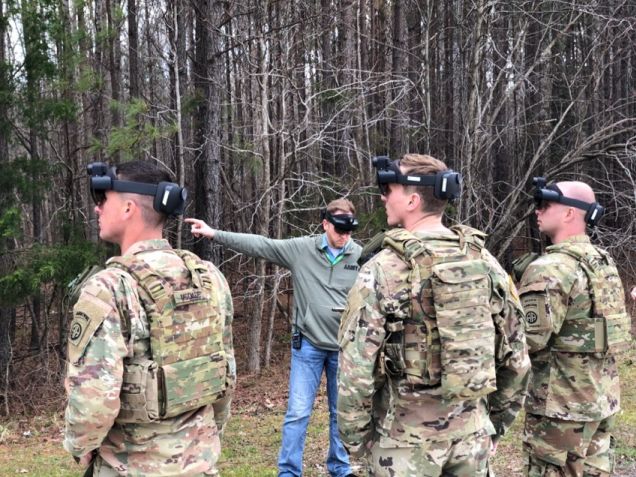
The US Army has identified a range of uses for its new Microsoft HoloLens augmented reality (AR) systems in operational use and training, as the service leans towards computer-generated environments.
Unlike virtual reality (VR), AR overlays digital or virtual creations onto the ‘real world’. For example, it could overlay information onto a soldier’s real-life view, whereas VR is entirely digital. A third category – mixed reality, or MR – involves a combination of real and virtual entities, in which the latter are ‘anchored’ to the former, enabling operators to interact with both.
The army signed a deal to acquire the AR headsets in 2018 as part of the Integrated Visual Augmentation System (IVAS) programme. A spokesperson for the IVAS programme said it is “first and foremost a tactical system that will provide soldiers with combined day/night vision enhancement and 24/7 squad situational awareness in all operating environments”. Soldiers will rehearse and train with the same systems that they use to fight, the spokesperson added.
AR technology has evolved significantly in several dimensions in recent years, the spokesperson said. Positional tracking technologies have dramatically improved, display systems have progressed to deliver more immersive digital content at higher resolutions, interaction models have advanced to support direct manipulation with hand and eye tracking, and cloud computing systems are enabling collaborative MR experiences that are persistent and cross-platform.

Looking to read the full article?
Gain unlimited access to Janes news and more...




